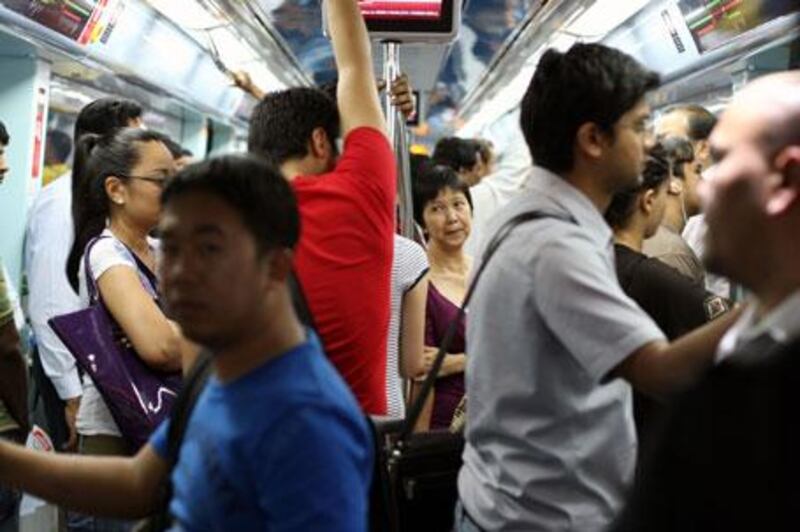DUBAI // The number of passengers using the Metro is expected to increase by up to 65,000 a day when seven more stations open today, providing residents with important new links throughout the city. The newly opened stations - Emirates, Airport Terminal 1, Al Karama, Emirates Towers, Dubai Internet City, Marina and Ibn Battuta - now connect previously disparate residential areas to shopping centres and offices across the city.
Even before they opened, anticipation of the additional stations had begun to breathe life into areas of Dubai that were suffering from steep declines in property values. There has been rising demand for office space near the new Dubai Marina stop, serving about 80,000 people living in the Marina, Jumeirah Beach Residences and Jumeirah Lakes Towers, said Jesse Downs, director of research at Landmark Advisory, the international property consultancy.
"We maintained from the beginning that you'd see the first impact in the commercial market, and you're starting to see that now," she said. "New commercial tenants prefer to have their offices next to the Metro stations, and they're willing to pay for it." She said it was still unclear what premiums tenants had begun paying for the office units, most of which are in Jumeirah Lakes Towers. But the trend was poised to have a positive knock-on effect, possibly persuading employees to move into nearby high-rises, she said.
Peyman Parham, a spokesman for Dubai's Roads and Transport Authority (RTA), said officials expected a wider range of commuters to use the Metro regularly. Passenger traffic was expected to increase from about 80,000 a day to as much as 145,000. "Karama will probably be the biggest growth for us," he said. "There's actually a high usage of other means of public transport from that area, and we're certain they will show a keen interest in it."
Mr Parham said singles, middle-income families and business travellers were likely to make the transition from taxis and buses to the Metro. "When you talk about the Dubai World Trade Centre, you think of the million or so delegates who visit exhibitions there," he said. "Then you've got the Marina, which is a different sort of passenger. You'll simply see a greater mix of people on the Metro," Mr Parham said.
A sudden mass transition to travel by Metro is unlikely, many analysts say. Commuters are largely accustomed to using their cars. Blair Hagkull, Middle East and North Africa managing director at Jones Lang Lasalle, said: "One of the ironies of Dubai is that as road congestion has improved, it's quicker to get from A to B by car; the idea that the Metro will be faster than other forms of commuting has fallen away to a certain degree."
At some stops, including the Burj Khalifa station, which lacks enclosed walkways to surrounding attractions, Metro access did not add much convenience, he added. "You would expect covered walkways there," Mr Hagkull said. "I understand those are being considered, but very clearly, the Metro as a feeder to the mall is an important issue." Indeed, during the summer, some residents said, they would be put off by the short walk to a Metro station.
Nicola Hoey, 31, from Ireland, who lives in the Jumeirah Beach Residences, said: "The weather for eight months of the year lends itself well; the other four months will be difficult, unless they have the correct infrastructure for cars." She works at an event planning company and regularly uses her car to travel to far-flung areas of the city. "If it's feasible, I'd use the Metro, but normally I have to drive around to particular office buildings. The Metro lends itself to landmarks, like malls, which is great, but I can't guarantee that's where I'd go."
Ian Albert, regional director at Colliers International, the global property consultancy, said it would take time for increased Metro access to fully affect property values. "If you look at global patterns, within a five-minute walk, or a kilometre from any station, there's normally a 10 to 15 per cent differentiation in prices," he said. "In the medium term, I wouldn't expect too much differentiation because the volume of supply is still keeping prices down; but in the longer term, as the market matures, we could expect to see that."
The seven new stations bring the number open on the Red Line to 18. The remaining 11 are expected to be operating by the end of the year.
For fares, maps and schedules go to https://www.thenationalnews.com/metromap
hnaylor@thenational.ae






